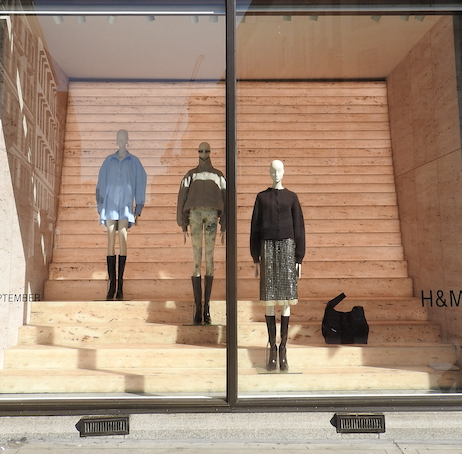Empowering In – Store Teams As Bricks and Mortar Fashion’s Comeback is Complete

14-10-2025
By Olivia Robinson, Head of UK & EU, VoCoVo
Online retail huffed and puffed – and did genuinely threaten to blow away in-store shopping for a while – but it couldn’t quite do it. Now, fashion stores are having their day again. Retailer Next recently announced it is to open ten new stores in the UK by January 2026, with CEO Simon Wolfson having confidently stated that the worst of the shift to online is over.
To add to the optimism, research by Battersea Power Station shows that nearly half of UK shoppers (45%) would rather complete purchases in-store than online (30%), suggesting that the attraction of digital convenience is starting to wane. What bricks-and-mortar fashion brands need to do now is capitalise on the increased football by ensuring that the customer experience matches the expectations to secure loyalty, thereby guaranteeing the industry’s future.
Meeting customer expectations
The customer experience is central to any retail environment, and today’s shoppers expect fashion stores to be well-organised, easy to navigate, and visually appealing. A clean, well-laid-out store not only helps customers find what they’re looking for quickly but also makes browsing more enjoyable. To deliver this, staff need to work together so that the store environment remains consistent, even on a busy Saturday afternoon.
Voice communication technology can help by allowing team members to coordinate instantly, whether that’s keeping displays tidy, replenishing stock on the floor, or ensuring fitting rooms remain clear and ready for use. During busy periods, even new or temporary staff can get immediate support from experienced colleagues, helping them maintain the same high standards throughout the store.
For example, if long queues begin to form at a returns desk, staff can instantly call for reinforcements to keep service flowing smoothly. This quick response reduces bottlenecks, prevents customer frustration, and keeps the overall shopping experience pleasant and stress-free.
Smarter stores
But product knowledge isn’t the only way to ensure an impactful customer experience. AI-driven smart technology is increasingly being integrated in stores to enable team members to keep a close eye on inventory. A customer might enter the store with a clear idea of a specific item they want, but find that it’s out of stock due to popularity. If colleagues are aware of changing stock levels ahead of time, thanks to instantly accessible data they can suggest alternative pieces that may suit a customer’s requirements, potentially preventing them from walking away without making a purchase.
It’s one of the many AI-powered solutions that can enhance the experience for customers, and it’s giving rise to the concept of tech-centred stores. For example, Spanish clothing brand Bershka recently opened a flagship store in Manchester that allows shoppers to use augmented reality (AR) windows to virtually try-on clothes by standing in front of a variety of different filters. The move is part of the retailer’s strategy to deliver the best possible customer journey, specifically removing the inconvenience of returning clothing items that don’t fit.
AI tools will feature heavily in these technology-driven stores, whether it’s shelf-scanning solutions, queue management systems or automated customer insights. But many retailers have already invested heavily in such systems and struggled to bridge the gap between the capabilities of the technology and the actual delivery of customer service. Essentially, this is the “final mile” connection.
The key to integrating AI effectively will give focus to open API technology, which gives retailers the opportunity to integrate a mix of AI-driven tools of their choosing, allowing them to focus on the human-centric aspects of their store. It’s these types of open interfaces that enable alerts and notifications to be converted into automated speech that can be delivered to voice communication headsets worn by colleagues, empowering them to provide an enhanced customer service.
AI can ease the burden of repetitive tasks and create more time for valuable interactions with shoppers. But fashion retailers must ensure that it effectively supports staff, rather than replacing them in their roles. Digital dressing room assistants might provide valuable insights, but it’s up to team members to take those insights and turn them into meaningful guidance and advice that creates customer loyalty.
Making every in-person visit count
With shoppers actively choosing to pop in store to satisfy their retail therapy, the priority is to make every in-person visit count. That means turning knowledge into a shared asset for teams to meet customer requirements and letting AI innovations quietly handle stock, queues and signals in the background.
Get the alignment right, and stores can both convert sales and earn return visits from customers. Successful brands will be those that combine smart, collaborative technology with human judgement and aesthetic stores to ensure customers leave with confidence in both their purchase and the people who helped them.
Top image: H&M window London by JoJo Iles























